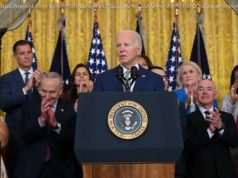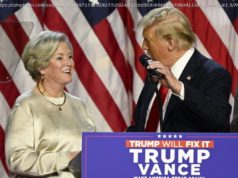In February, then-secretary of state Rex Tillerson was informed by a North Korean envoy that Supreme Leader Kim Jong-un wanted to meet with President Trump. Tillerson favored accepting the invitation quickly. Trump didn’t.
In February, then-secretary of state Rex Tillerson was informed by a North Korean envoy that Supreme Leader Kim Jong-un wanted to meet with President Trump. Tillerson favored accepting the invitation quickly. Trump didn’t.
The president had been talking privately for months about a one-on-one session with Kim, a former administration official said. “North Korea is what he wanted to do.” But the president preferred to wait and make preparations, while not engaging the State Department and White House staffs.
He secretly assigned Mike Pompeo, then CIA director, to handle the response to North Korea. It led to three results: Tillerson’s ouster, Pompeo’s elevation to secretary of state, and Trump’s historic meeting in Singapore last week with Kim.
The whole affair also shed light on the president’s style after 17 months in office. The first event with Kim in Singapore was a face-to-face meeting with interpreters in the room but no staff. “It was parallel to Reagan when he met Mikhail Gorbachev at a lake house in Geneva” in 1985, says Trump’s friend Newt Gingrich, the former House speaker.
That setting was conducive to friendly dialogue. So the Reagan-Gorby chit-chat was deemed a success. Trump wanted something like that to emerge between him and Kim and it came close to happening. Now he’s bent on working again outside the smothering formalities of establishment Washington. That’s establishment, NeverTrump D. C.—enemy territory.
Some things have changed. His learning curve has picked up. He’s on the verge of becoming a foreign policy president. But he’s still an outsider, which means he doesn’t fit the White House mold and is stuck inside a system that limits his political creativity. His staff isn’t much help. They’re Republicans, after all.
But think for a moment about the end run with Pompeo, leaving Tillerson and the foreign service slugs in the dark. It was inspired. He assigned one of the few people in Washington he trusts to line up things for the lovefest with Kim. The Trump-haters were stunned.
Remember how efficiently Trump got rid of the Paris climate accord, one of many decisions other presidents would have been afraid to make? The president recruited Scott Pruitt, the EPA administrator, who knows the downside of the treaty by heart. When Trump announced his decision to pull out, he was persuasive. A press secretary couldn’t have handled this job as well.
Another risky act only Trump was brave enough to commit was moving the U. S. embassy in Israel from Tel Aviv to Jerusalem. He wisely did it on short notice. The Palestinians exploded, but got over it quickly.
Whoever introduced Trump to tweeting—perhaps it was his own doing—was a genius. As a method of communication, it fits Trump’s personality. I can’t prove it, but I believe his saber-rattling tweets must have pushed Kim toward the tête-à-tête with Trump.
“Trump is primarily not staffed,” Gingrich says. The New York Times is horrified. He likes to begin every visit with a foreign leader with a personal meeting, just two leaders swapping tales. That, rather than relying on White House aides or Washington “experts,” is where he develops what Gingrich calls “his higher quality of knowledge.”
Had the State Department been running the show, the meeting with Kim would likely have been a formal diplomatic production. Trump would have had less chance of stirring any rapport with Kim than Elizabeth Warren does of convincing Cherokees she’s one of them.
Meanwhile, Trump has learned from the real experts how to function in the world. Before the Kim meeting, Trump conferred at the White House with South Korean president Moon Jae-in in May and Japanese prime minister Shinzo Abe last week. His last meeting with Chinese president Xi Jinping was in November 2017. After Xi met with Kim in May, he sent a message to Trump that Kim was looking forward to getting together with the president in Singapore.
Lots of presidents have complained about being tied down by the White House system and try to break outside it. That causes leakers to step up to the challenge. In Trump’s case they’ve unloaded their worries to the New York Times. “Rather than trusting the people around him, Mr. Trump has taken to working the phones more aggressively to seek counsel from outside voices,” the Times reported two days before Trump met with Kim.
Trump “now dictates to aides what he would like to see happen, as opposed to seeking a range of views, as predecessors may have done, people close to him say,” according to the Times .
Telling his underlings what to do is hardly worrisome. But Washington is a liberal town and the media rush to defend the status quo when it’s threatened by an interloper. When outsiders intervene, their influence declines. It’s a binary proposition. On this front, Trump has made the right choice.






